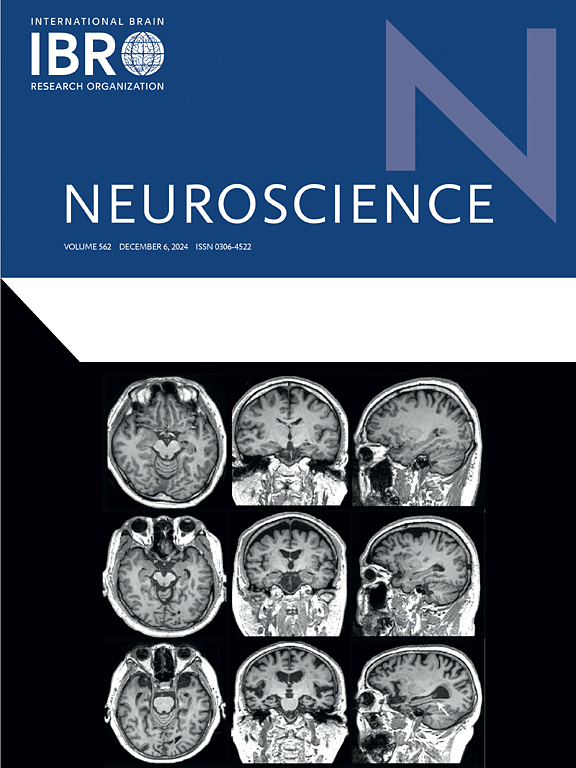用Conus衍生的α- conop肽G1靶向CXCR4和TRPV1治疗胶质母细胞瘤:一种集成的计算机和网络药理学方法
IF 2.8
3区 医学
Q2 NEUROSCIENCES
引用次数: 0
摘要
胶质母细胞瘤(GBM)被认为是一种高度侵袭性和致死性的中枢神经系统原发性脑肿瘤,其特点是肿瘤间和肿瘤内的显著异质性,限制了治疗效果。本研究旨在利用α- conop肽GI靶向胶质母细胞瘤干细胞(GSCs),采用芯片方法识别和验证治疗途径。Swiss Target Prediction确定了100个潜在的靶基因,α- conop肽GI的毒性分析显示毒性很小。使用ramachandran图进行结构验证,确认了肽的稳定性,参考PDB代码1NOT。进一步的通路分析使用DisGeNET和Venn图分析将焦点缩小到50个共同的枢纽基因。利用Cytoscape进行蛋白-蛋白相互作用(PPI)相互作用的STRING网络分析,突出了具有高度值的关键基因,包括C-X-C趋化因子受体4型(CXCR4-score: 31)和瞬时受体电位香草样蛋白1 (TRPV1-score: 29)。通过京都基因和基因组百科全书途径和基因本体分析的功能注释将这些基因与癌症,血管生成和IL-17信号传导的关键途径联系起来。利用ClusPro和Schrödinger软件进行分子对接研究,发现α- conop肽GI与CXCR4 (ΔG:−10.7 kcal/mol)和TRPV1 (ΔG:−9.3 kcal/mol)具有较强的结合亲和力。分子动力学模拟进一步验证了这些相互作用,均方根偏差(RMSD)、均方根波动(RMSF)和配体扭转谱都在最佳范围内(1-3Å)。这些发现表明,源自Conus geography的α- conop肽GI通过靶向肿瘤复发和血管生成,有望成为GBM的治疗药物。需要进一步的体外和体内研究来证实其临床潜力。本文章由计算机程序翻译,如有差异,请以英文原文为准。

Targeting CXCR4 and TRPV1 with α-Conopeptide G1 derived from Conus for Glioblastoma: an integrative in-silico and network pharmacology approach
Glioblastoma (GBM) was identified as a highly aggressive and lethal primary brain tumor of the central nervous system, marked by significant inter- and intra-tumoral heterogeneity that limited therapeutic efficacy. This study aimed to target glioblastoma stem cells (GSCs) using α-conopeptide GI, employing an in-silico approach to identify and validate therapeutic pathways. Swiss Target Prediction identified 100 potential target genes, and toxicity analysis of α-conopeptide GI demonstrated minimal toxicity. Structural validation using a ramachandran plot confirmed the peptide’s stability, referencing the PDB code 1NOT. Further pathway analyses narrowed the focus to 50 common hub genes using DisGeNET and Venn diagram analysis. STRING network analysis for Protein-Protein Interaction (PPI) interaction conducted using Cytoscape, highlighted key genes with high degree values, including C-X-C chemokine receptor type 4 (CXCR4-score: 31) and transient receptor potential vanilloid 1 (TRPV1-score: 29). Functional annotation through Kyoto encyclopedia of genes and genomes pathway and Gene Ontology analysis linked these genes to critical pathways in cancer, angiogenesis, and IL-17 signaling. Molecular docking studies using ClusPro and Schrödinger software demonstrated strong binding affinities of α-conopeptide GI with CXCR4 (ΔG: −10.7 kcal/mol) and TRPV1 (ΔG: −9.3 kcal/mol). Molecular dynamics simulations further validated these interactions, with Root Mean Square Deviation (RMSD), Root Mean Square Fluctuation (RMSF), and ligand torsion profiles falling within optimal ranges (1–3Å). These findings suggested that α-conopeptide GI, derived from Conus geographus, held promise as a therapeutic agent for GBM by targeting tumor recurrence and angiogenesis. Further in-vitro and in-vivo studies are required to confirm its clinical potential.
求助全文
通过发布文献求助,成功后即可免费获取论文全文。
去求助
来源期刊

Neuroscience
医学-神经科学
CiteScore
6.20
自引率
0.00%
发文量
394
审稿时长
52 days
期刊介绍:
Neuroscience publishes papers describing the results of original research on any aspect of the scientific study of the nervous system. Any paper, however short, will be considered for publication provided that it reports significant, new and carefully confirmed findings with full experimental details.
 求助内容:
求助内容: 应助结果提醒方式:
应助结果提醒方式:


